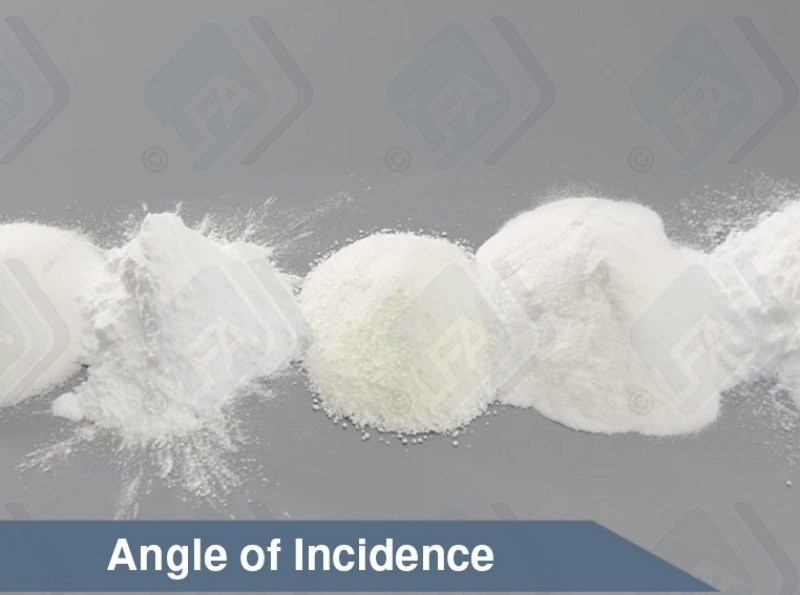Lattosio in Polvere
La polvere di lattosio è un prodotto familiare ai consumatori. Ha un'ampia gamma di utilizzi. Migliora il sapore, la consistenza e il colore delle compresse e generalmente non è reattivo.
La polvere di lattosio di grado farmaceutico è spesso utilizzato nelle compresse e contiene bassi livelli di impurità. Si tratta di un carboidrato, il che significa che è un disaccaride. Ciò significa che è nella classe degli zuccheri che contengono due residui monosaccaridi. Determina il peso del latte nel 2-8% circa. E' un prodotto solubile con un livello di dolcezza basso. La polvere di lattosio è chiara e incolore, oltre che inerte. Può migliorare la sicurezza degli elementi di un prodotto e rendere il processo di fabbricazione più agevole.
Cos'è la polvere di lattosio
Il lattosio è un carboidrato semplice presente nel latte. E' conosciuto anche con il nome di zucchero del latte. Riduce lo zucchero, il che significa che reagisce con gli amminoacidi ad alte temperature. Questo può influenzare il sapore finale. Quando si utilizza la polvere di lattosio in una compressa, può essere utilizzato con il metodo di compressione diretta. Il lattosio secco e anidro può formare una compressa solida se compresso. Il grado farmaceutico è una polvere fine, ma può funzionare in combinazione con altre polveri di lattosio. Miscele di dimensioni inferiori possono rendere la mescola più facile ed efficace, e quelle più grossolane migliorare la fluidità. La polvere di lattosio può essere mischiata con il saccarosio per creare miscele di rivestimento di zucchero.
La creazione di vari gradi di polvere di lattosio ha fatto molti progressi. Ogni grado produce una forma leggermente unica di polvere di lattosio. Questo significa che si può essere più specifici con le proprietà della formula. Ogni grado differente ha metodi di produzione diversi. Il lattosio di grado farmaceutico è prodotto con una concentrazione di siero per un eccesso di lattosio saturo.
L'opinione dell'utente finale deve essere presa in considerazione durante la creazione di una compressa. La polvere di lattosio è un ingrediente ben noto e molto utilizzato, familiare per il consumatore. L'unico problema di cui tener conto sono i consumatori intolleranti al lattosio. Il consumo di questo ingrediente in questi casi può provocare crampi, diarrea e flautolenza.
La polvere di lattosio di grado farmaceutico deve essere conservata in un luogo fresco e buio. La temperatura deve restare al di sotto dei 27 °C e l'umidità inferiore al 65%, in quanto un elevato tasso di umidità può causare la comparsa di muffa.
La polvere di lattosio è:-
-
"GRAS" (Generalmente Riconosciuta come Sicura)
-
Inclusa nel database della FDA come ingrediente inattivo
-
Inclusa tra le medicine non-parenterali e parenterale in licenza del Regno Unito
-
Inclusa nell'elenco canadese degli ingredienti non medicinali accettabili
La polvere di lattosio è un ingrediente ampiamente accettato, considerato sicuro in tutto il mondo. Migliora la qualità e il sapore del vostro prodotto. L'ingrediente si adatta perfettamente ad un'ampia varietà di applicazioni.
|
Nome |
Valore |
|---|---|
|
Numero CAS |
63-42-3 |
|
Formula molecolare |
C12H22O11 |
|
Aspetto |
Polvere bianca |
|
Stato fisico |
Solido |
|
Conservazione |
Conservare a temperatura ambiente |
|
Punto di ebollizione |
668.9 °C |
|
Densità |
1.525 g/cm3 |
|
Peso molecolare |
342.30 g/mol |
Yes, it does not matter what age, size or sex the person consuming the products is. It is, however, important to check the intolerance data.
Yes, all of the excipients are safe for human or animal consumption. There are some precautions that should be taken when handling them and there are some people that might have intolerances to some of them. Information on this can be found in the products MSDS and Intolerance Data Sheet. This can be found in this section for every excipient.
Yes, there are all of them can be found in the intolerance sheets for each product. The intolerance sheets can be found here: https://www.lfatabletpresses.com/product-data
FFFFFF Yes, we have bulk pricing for all of our excipients, and these can be found in this section. We offer bulk in 500 kg, 1 ton, 2 ton and 5 ton lots. The prices are set on these quantities as these are the amounts that will fit on pallets.
Yes. CoA stands for Certificate of Analysis this is also known some times as an MSDS (Material Safety Data Sheet) all of the information contained in a CoA is inside the MSDS for every LFA product which is emailed to you after purchase.
Yes. There are two things at play here. You can get hygroscopic and hydrophobic excipients. Hygroscopic means that they take on water quickly, while hydrophobic means that they repel water.
There are products know as supper disintegrants. These products help the breakdown of tablets. At the moment LFA does not sell any supper disintegrants.
Magnesium stearate is hydrophobic this means that it will slow the breakdown of a tablet.
However, it is used in such small amounts that most of the time it will not make a difference to our customer's products. If they would like to be sure then they should conduct what is known as a disintegration test.
Firmapress - 2 years form batch date.
Dextrose - 3 years from batch date.
Dicalcium Phosphate - 3 years from batch date.
Microcrystalline Cellulose -
Magnesium stearate -
Lactose - 2 years from batch date.
Silica Dioxide - 2 years from batch date.
here are 6 steps that should be followed as a general rule of thumb when cleaning contact surfaces that have come into contact with powders:
Dry Clean - First you need to remove as much of the dry powder as possible. You can do this using a hover/vacuum. Make sure that the vacuum you are using has a filter good enough to handle fine dust.
Wet Clean - Next you need to perform a wet clean. This can be done with warm water and soap or if available an ultrasonic cleaner.
Rinse - Next you need to rinse off any soap with potable water (drinking water). You do not have to do this if you used an ultrasonic cleaner in the last step. It is important to ensure that all parts are thoroughly dried immediately after washing to avoid any rusting.
Sanitise - Next you need to sanitise the surface. This step is recommended by the FDA. There are a number of sanitising solutions available designed to be applied and left on.
Lubricate - You now need to lubricate any parts that require it. This should be with the appropriate grade oil or grease considering your use and greasing chart. Store - Finally store any of the parts in a cool dry place. If you are storing them on the machine then make sure the machine is in a temperature controlled environment with low humidity.
Dextrose - approx 100 mesh
Dicalcium Phosphate - approx 100 mesh
Microcrystoline Cellulose - approx 120-200
Magnesium sterate -
Lactose - 80 mesh
Silica Dioxide -
Firmapress - 100-200 mesh
Dextrose - Sweetener, binding agent, good for chewable tablets or candy.
Microcrystalline Cellulose - Binder, filling agent. Good at binding tablets and making them bigger. It can also be used as a filler for capsules.
Magnesium stearate - Dry Lubricant. This stops products from getting stuck to the tooling. It can also help with powder flow issues and caking issues.
Lactose - Binder, sweetener and bulking agent. It has a large mesh so it flows well but most people do not like it because of the intolerance issues.
Silica Dioxide - Flowing agent. This assist powders in flowing smoothly through the machines. It also helps with cacking issues where powders get stuck to the machine.
Firmapress - 2 years form batch date.
Dextrose - 3 years from batch date.
Dicalcium Phosphate - 3 years from batch date.
Microcrystalline Cellulose -
Magnesium stearate -
Lactose - 2 years from batch date.
Silica Dioxide - 2 years from batch date.
If your product does not bind well then we would recommend using MCC. This can be used in any % the limiting factor is the size of the tablet.
If the amount of MCC you would have to use would be too much or if you do not want to use MCC then you have 3 other options: Ask your supplier for a directly compressible or tabletable grade of your product. Spray dry your product. Wet granulate your product.
If your product is sticky then you will need to add a dry lubricant to your mix. For this, we recommend magnesium stearate.
We do not recommend that you add more than 1% to the mix as more than this can cause capping. If your product is still sticky at this point then we would recommend looking into granulation.
If your product or API is clumpy then you will need to add an anticaking agent. For this, we recommend silicon dioxide. We only recommend adding a maximum of 2% of this to the mix








